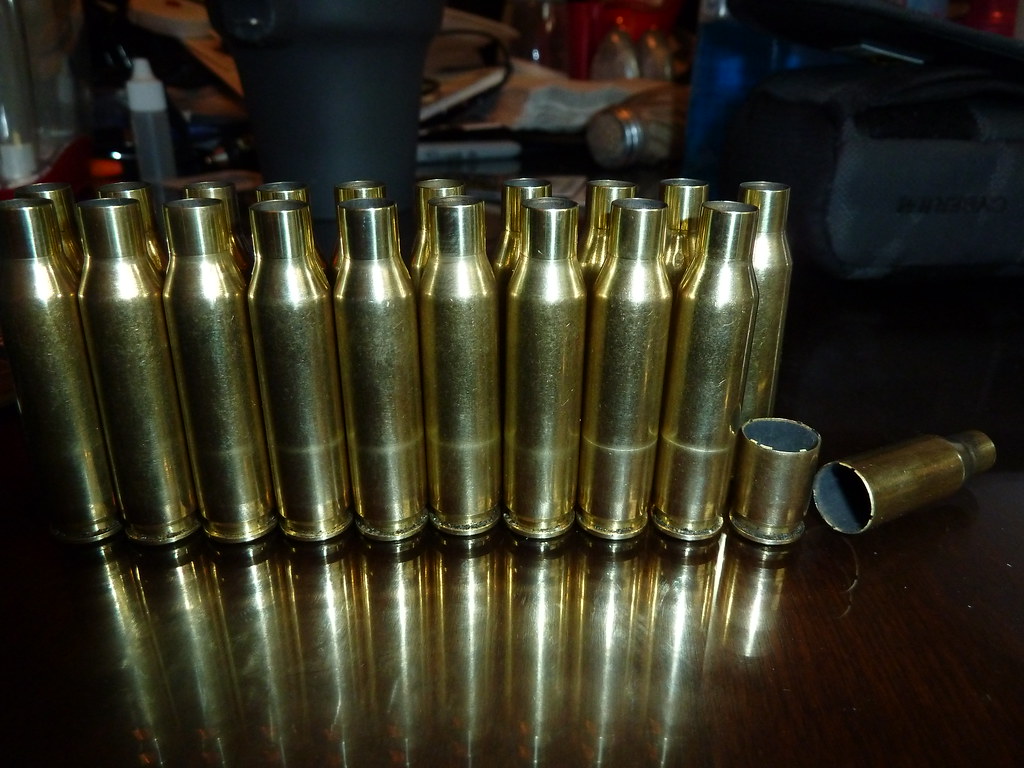As stated above you are over resizing your cases and bumping the shoulder back too far, this makes the case shorter than it needs to be and creates excess head clearance.
Head clearance is the "air space" between the rear of the case and the bolt face, and the general thumb rule is .001 to .002 shoulder bump or head clearance on a bolt action and .003 to .004 on a semi-auto.
Below is a animated image of a cartridge case firing and the brass case stretching to meet the bolt face.
If you control your full length resizing and only bump the shoulder of the case back .001 to .002 the brass is elastic and will stretch this minimum amount and then spring back to its original size when fired.
You need a Hornady Cartridge Case Headspace gauge, you measure your fired cases and only resize them the minimum amount and you will not have case head separations.
I use Redding Custom Shell Holders to control shoulder bump below, the dark shell holder has a +.004 on the top of the shell holder. This shell holder is .004 (four thousandths) taller than a standard shell holder, the set contains 5 shell holders and each one is progressively .002 taller than the next one.
(sorry, I removed this photo from post, as I exceeded the pic limit in a post...)
You do not need these shell holders to make the die adjustments, and you can just use feeler gauges between the shell holder and the bottom of the die as spacers for setup.
In other words the instructions for your dies are written to make sure a resized case will fit any chamber and the instructions can cause you to over resize your cases. By adjusting your dies for "YOUR" chamber the cases will last "MUCH" longer.
Below is a exaggerated example of full length resizing, pay attention to the blue, red and green lines. When resizing you can actually make your cases "LONGER" than their fired length with excessive clearance between the die and the shell holder. The object is to just make the cartridge case one or two thousandths shorter than the chamber headspace and let the bolt close without resistance. (minimum clearance)
I inspect my cases with a RCBS Case Mastering Gauge and check for thinning in the base web area. And in 46 years of reloading I have never had a case head separation, by knowing what to look for before it happens.
Below is an example of a SAAMI commercial case being fired in a Military .303 British chamber. At maximum military headspace you can have as much as .017 head clearance and the case will stretch badly.
With proper fireforming techniques and allowing the case to properly headspace on the shoulder there is no room for the case to stretch.
The .308 cases below were resized with the dies setup as per the instructions and the press reaching cam over. This is only an example and actual case life will depend on adjusting your dies for minimum shoulder bump. The rifle used for this test was a new Savage rifle and had tight headspace meaning no more the .002 over the GO headspace gauge.































